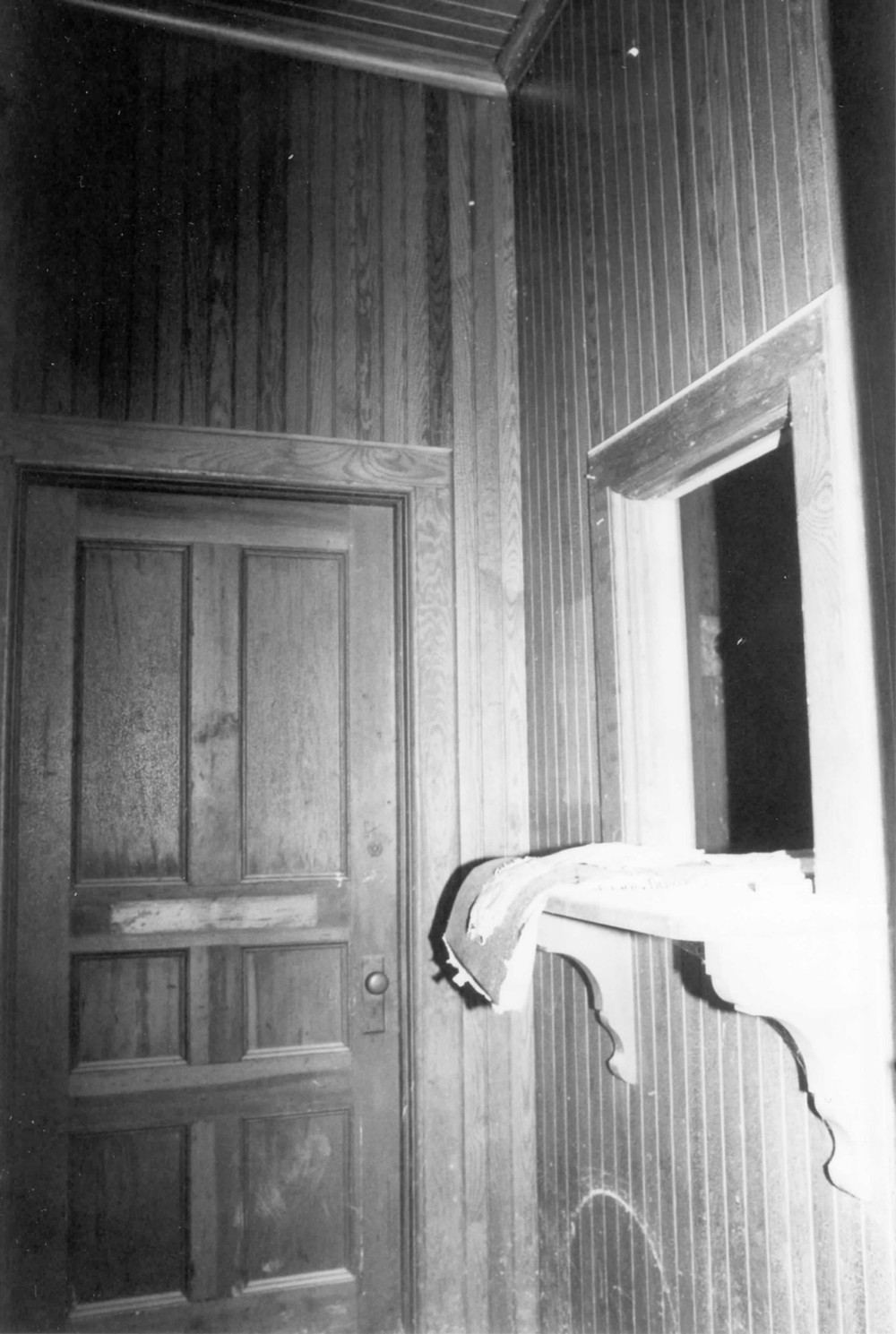Abandoned Ulster and Delaware Railroad Train Depot in NY
South Gilboa Railroad Station, South Gilboa New York
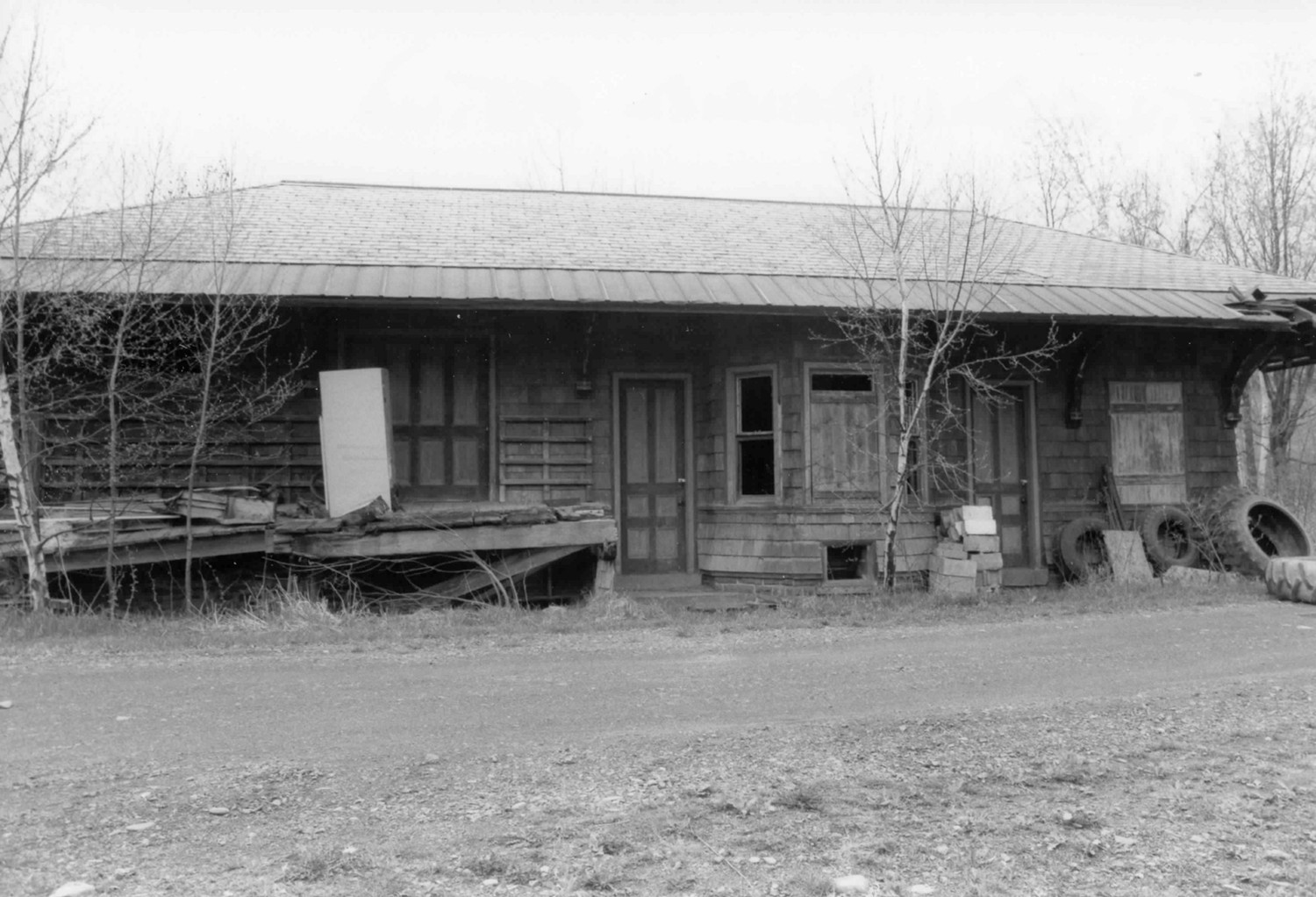
The South Gilboa Railroad Station was built in 1905 by the Ulster & Delaware Railroad. It is one of the standardized, partly prefabricated stations erected by the railroad along its right-of-way. The station remained in operation from 1905 to 1932, serving passengers traveling to the nearby Catskill Mountains resort area.
The town of Gilboa was established in 1848. Characterized by rolling hills and wooded upland, the area was isolated and slow to develop during the latter half of the nineteenth century. Abundant hemlock forests stimulated the production of tanbark, which in turn contributed to the development of the leather tanning industry in the Catskill region. Rail transportation first penetrated the Catskills in the late nineteenth century. The Rondout & Oswego Railroad (chartered 1866) and its successor, the Ulster & Delaware (1872), provided an essential connection between Kingston on the Hudson River and the Catskills to the west and north. At its zenith in the early twentieth century, the Ulster & Delaware line ran from Kingston on the Hudson River through Schoharie County at South Gilboa to Stamford, Delaware County, to Oneonta in Otsego County, a total distance of 108 miles. The railroad facilitated the shipment of agricultural, tannery, and forest products through the port of Kingston and opened the heart of the Catskill Mountains to tourism. Under the leadership of President Samuel Decker Coykendall, the Ulster & Delaware was substantially upgraded beginning in the late 1890s. The South Gilboa Station was one of several new facilities constructed as part of this ambitious expansion program.
The South Gilboa Station was placed in service in 1905, one of a group of new stations built soon after the railroad was extended to Oneonta in 1900. Components of the station were prefabricated and transported by rail to the construction site, where they were erected by railroad workers. The standard Ulster & Delaware Railroad stations of the early twentieth century embodied a consistent design aesthetic, featuring long, low rectangular forms, broad-hipped roofs carried on exposed rafters and oversized decorative brackets, raised platforms, light wood frame construction, shingle cladding, a trackside bay window, and beaded interior wainscoting. The stations also reflect an unusually high level of attention to materials and finishes for such utilitarian buildings. Despite its deteriorated condition, the South Gilboa Railroad Station retains these defining features; it remains an important example of the small rural stations that were part of the railroad's extensive construction program of the early 1900s. (Another example, is the Phoenicia Railroad Station in neighboring Ulster County)
The expansion of rail transportation into the Catskills greatly contributed to the growth of a regional tourist-based economy. Each summer season, the railroad brought an influx of tourists and boarders seeking to escape the heat and grime of New York City. The Ulster & Delaware Railroad stimulated the growth of the Catskill hotel and boardinghouse trade, transporting thousands to a respite in the mountains. During the railroad's peak operating year of 1913, passenger trips totaled 675,000. At South Gilboa, wagons and omnibuses met arriving trains, conveying passengers from the depot to nearby accommodations.
The tourist boom lasted through the first several decades of the twentieth century. When the Ulster & Delaware was taken over by the New York Central Railroad in 1932, the line serving South Gilboa was abandoned. The unused station fell into disrepair and has remained vacant to the present day.
Building Description
The South Gilboa Railroad Station is located on the south side of Bailey Spur Road in the hamlet of South Gilboa, Schoharie County. Situated on a parcel of 2.73 acres, the building stands adjacent to the former right-of-way of the Ulster and Delaware Railroad. The former railroad embankment, with rails and crossties removed, has been converted to a modern hiking trail, the Catskill Railroad Recreational Trail. Several buildings formerly located near the property and formerly associated with the railroad spur have been demolished.
The railroad station constructed in 1905 is a one-story, rectangular, wood frame building erected above a full basement built of mortared fieldstone. The station is oriented generally northwest to southeast, with its long axis parallel to the trackbed. The exterior walls are sheathed in wood shingles. The broad eaves of the slate-covered, hipped roof provided shelter to the former platform area. (The raised wood platform surrounding the southeast end of the building remains in deteriorated condition.) The supporting roof brackets and exposed rafter ends exhibit scroll-sawed decoration. In plan, the station consists of three sections, a passenger waiting room at the northwest end of the building, a stationmaster's office in the center, and a freight and baggage room at the southeast end. Fenestration throughout the building is varied according to function. A bay window in the stationmaster's office afforded a view along the track in both directions. Rectangular windows containing double-hung wood sash light the passenger waiting room, six-panel, single wood doors permitted access to the office and waiting room, and sliding doors facilitated the loading of freight and baggage.
The interior configuration (waiting room, station agent's office, baggage room) is standard for the small stations built on the Ulster & Delaware line. A narrow cross hall and vestibule separates the baggage room from the station office area. The original ticket window is located in the wall separating the office and hall vestibule; bench seats remain along the walls of the waiting room. The walls and ceilings of the passenger waiting area and office are covered with a wainscot of varnished vertical, narrow beadboard; the baggage room walls are unsheathed.

North elevation (1999)
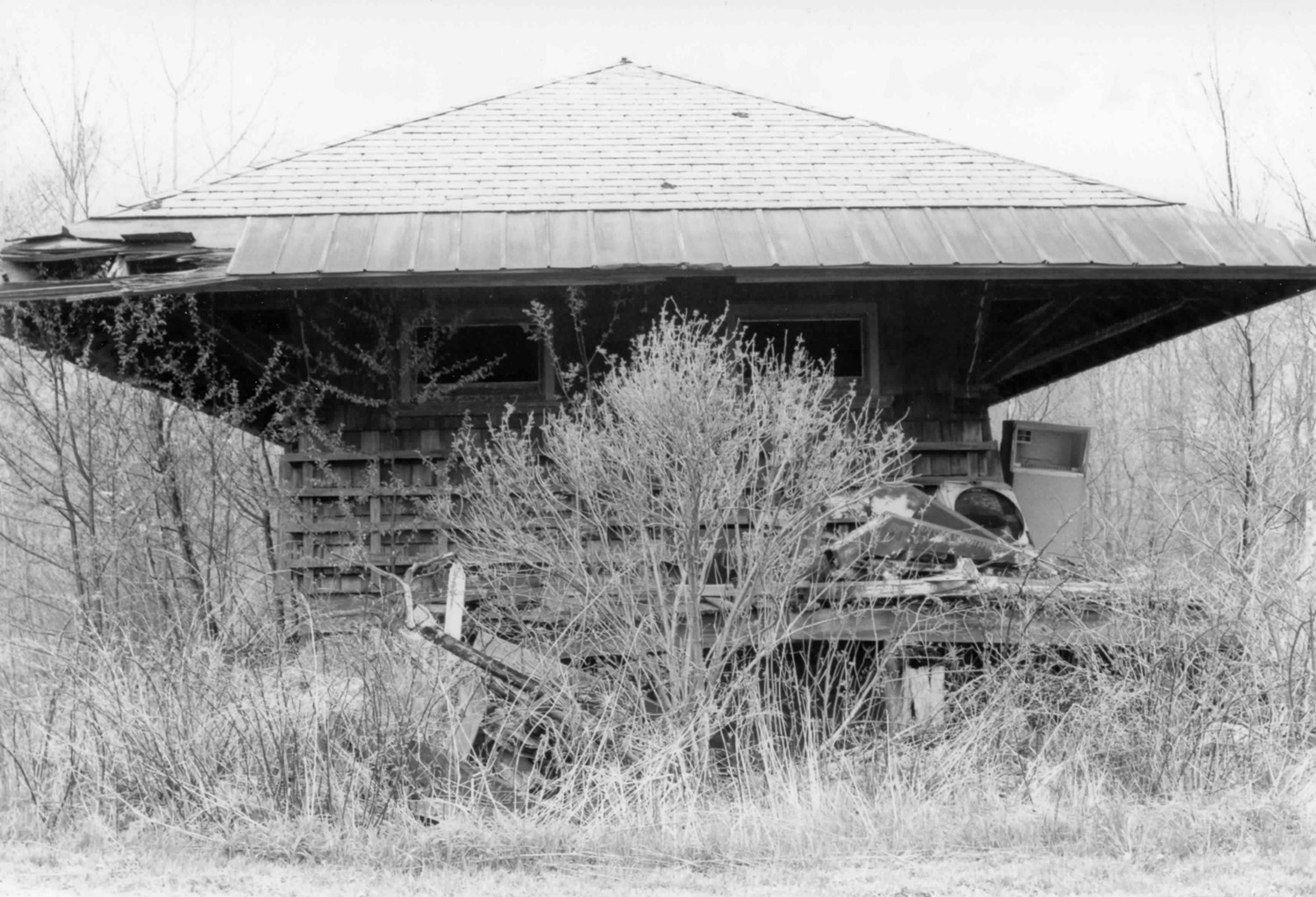
East end (1999)
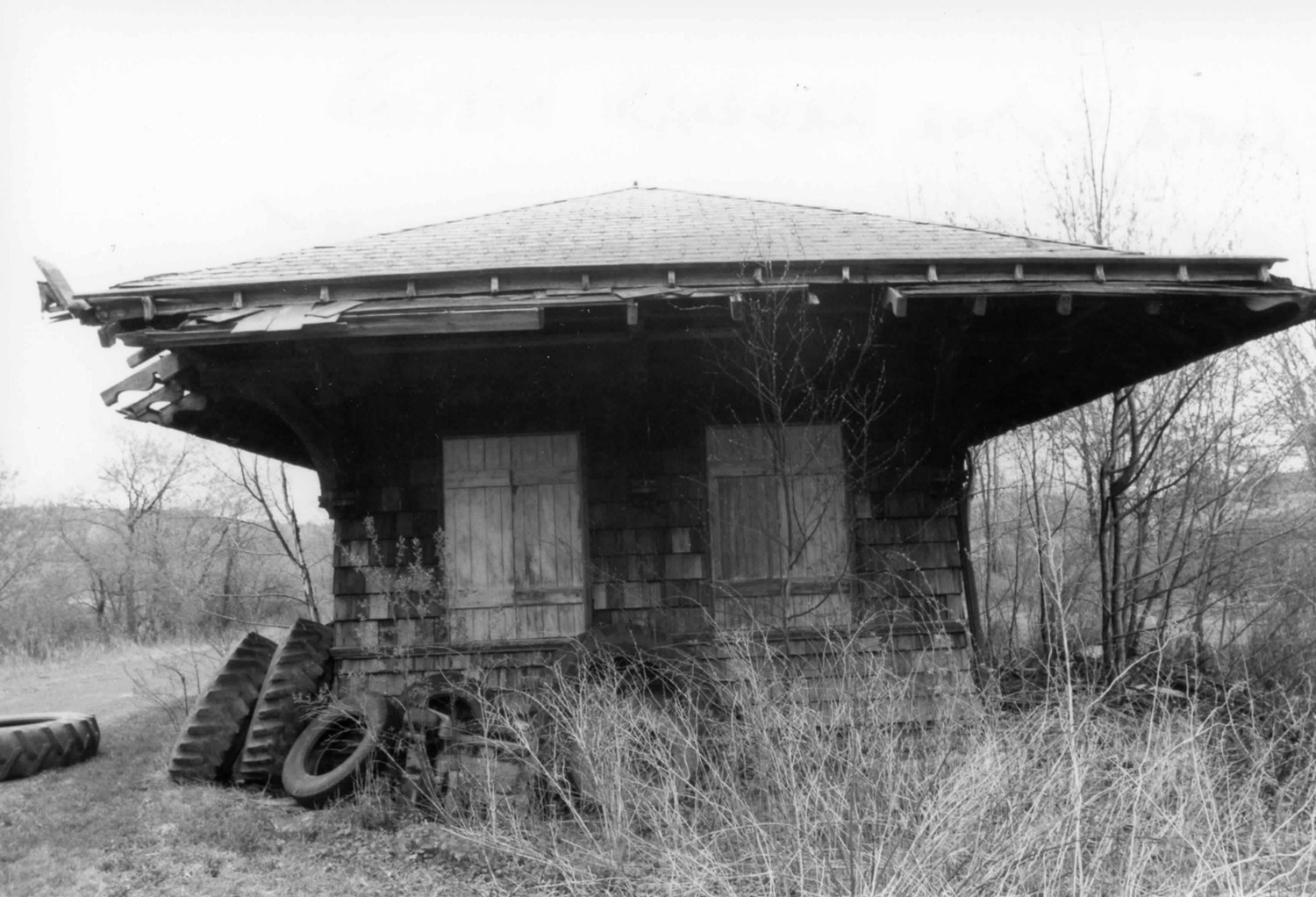
West end (1999)
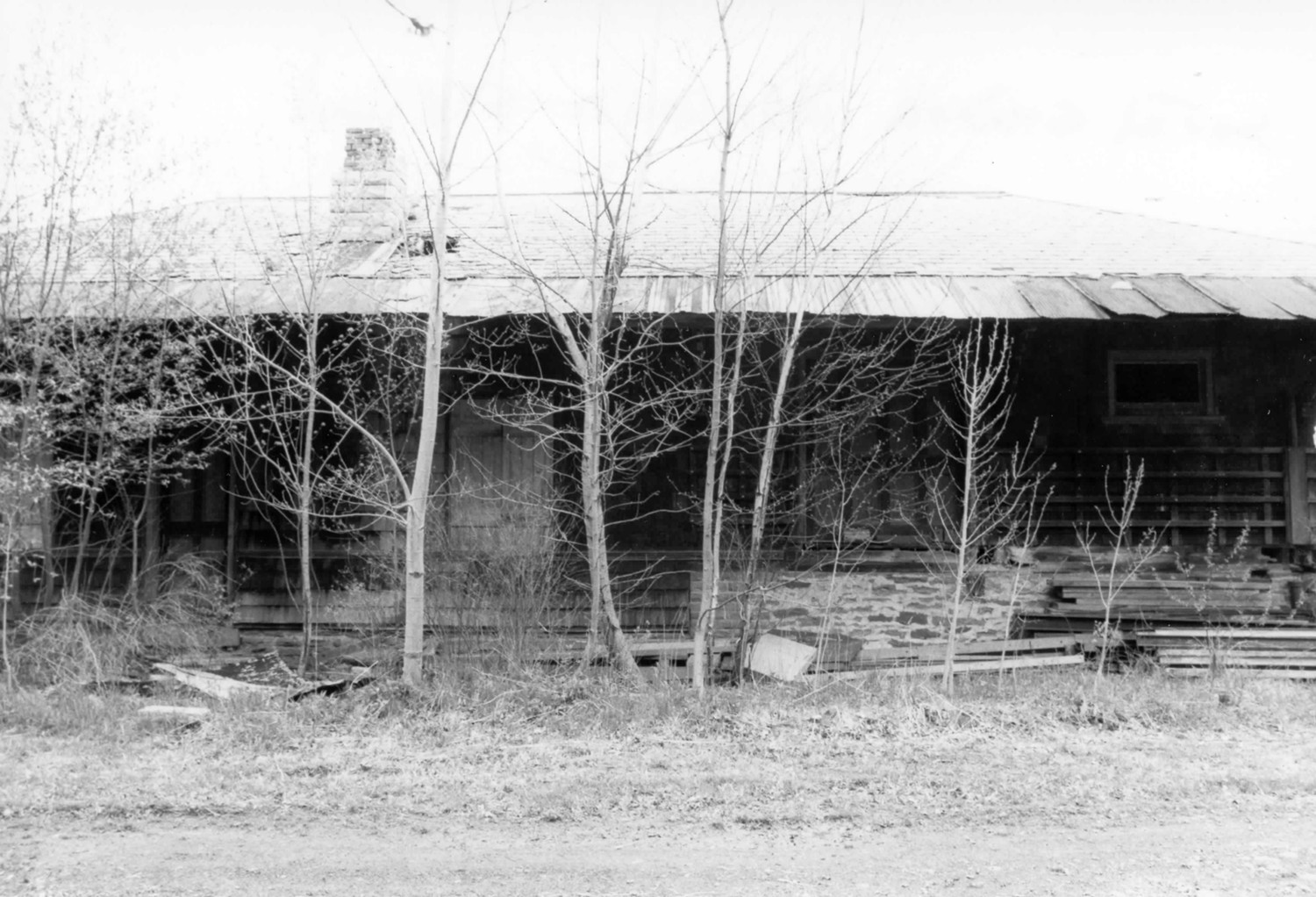
South elevation (1999)
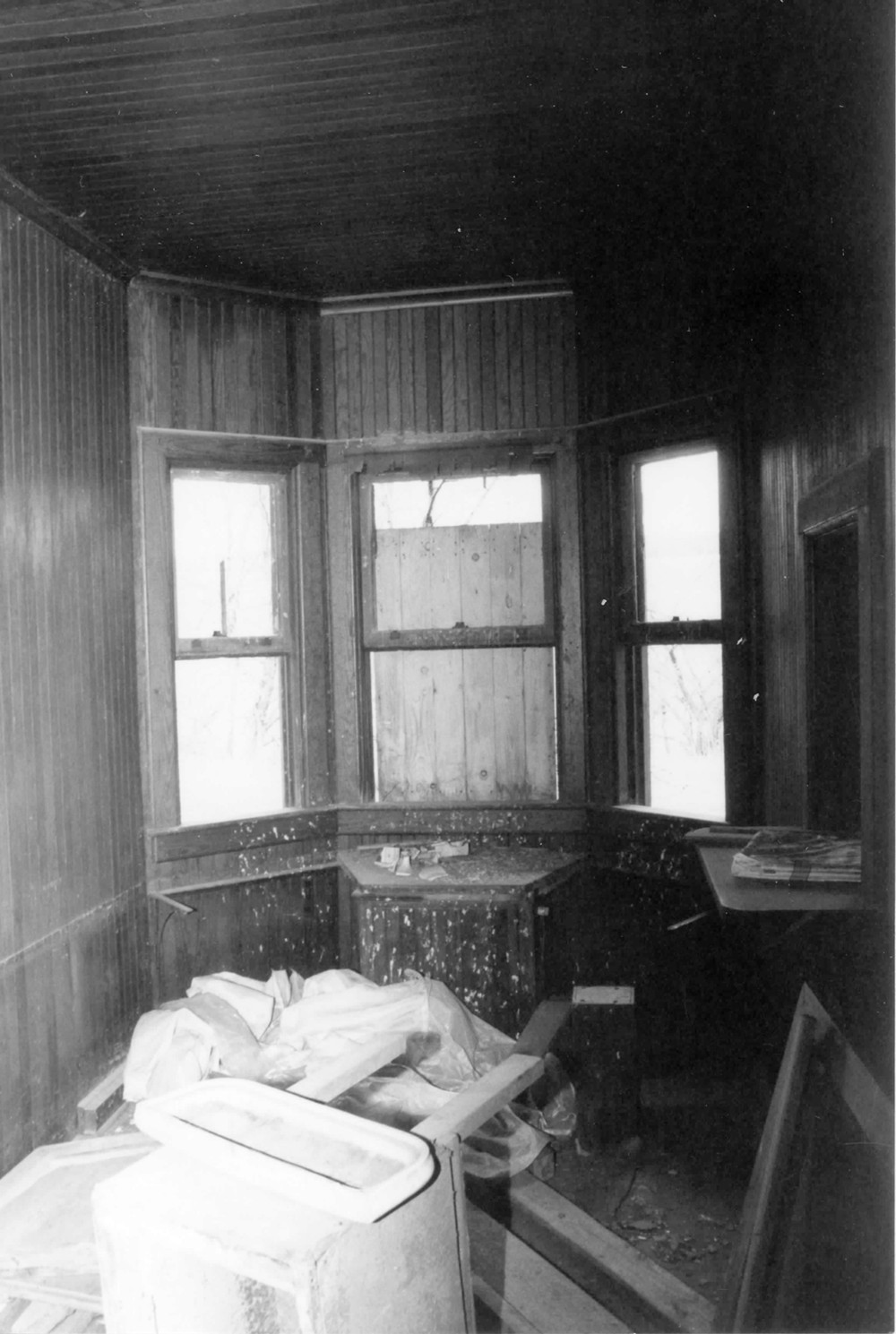
Stationmasters office (1999)
